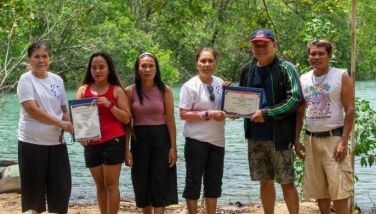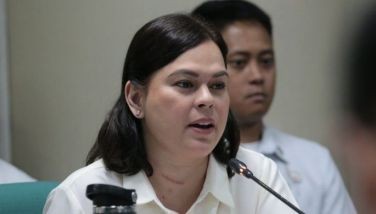Waging war against nature: The folly of engineering without understanding
In 1991, 2000 people in Ormoc, Leyte died when the Anilao River roared through Isla Verde, as heavy rainfall carried logs and uprooted trees. The culprit was a denuded watershed that couldn’t absorb the water, and what would have been a medium-sized flood became a 10-foot killer flood. The lesson of Ormoc was seared into my brain, as our former dean at UP Los Baños discussed how the river itself has been gradually rerouted over many years by shortsighted land development. The lesson: you can’t fight water, and you won’t win against water with sediment.
As a graduate student in the midwestern US, I was exposed to case studies of floodplains and levees along the Illinois and Missouri rivers as examples of what not to do. The lesson was seared into my brain — you cannot change land use patterns and not expect changes in hydrologic characteristics of rivers and streams. The lessons are painful to recall given the recent catastrophic flooding in Metro Manila; flooding that could have, and should have been foreseen as inevitable.
The development of Metro Manila can only be described as haphazard. The best example is my hometown of Marikina. For many years, it has been touted as a model municipality (and then city), where the local government has done a lot of infrastructure projects. The streets in my neighborhood, including the sidewalks, were all paved, courtesy of city hall. There is very little actual soil left in the public spaces, and even trees that have been growing by the sides of the roads were cut down. Literally, they paved every available surface. My mother was happy, and said that now everything looked clean. I shook my head and said that this was a disaster waiting to happen. At a workshop in UP Diliman last year, I repeated my concerns to a group of engineers from Marikina. I used my street as an example, but realized that the phenomenon was replicated all over the city, and in fact all over Metro Manila.
The most basic equation in flow calculation in watersheds is the Rational equation: Q = ciA, where Q is the peak flow, c is the runoff coefficient, A is the watershed area, and i is the rainfall intensity. What happens to the runoff coefficient c when you make previously permeable surfaces impermeable? Essentially, water that used to infiltrate the soil, percolate to the groundwater, and dampen the streamflow hydrograph is now 100 percent contributing to runoff. Nothing infiltrates — there is no soil or vegetation to absorb any of the water. This was Ormoc on a city scale, not so much with hills and deforestation, but with sidewalks and the war on vegetation. The hydrograph under these conditions tends to change, with an increase in the maximum flow, in a shorter amount of time. In other words, you get higher flows faster — there is no infiltration and water absorption capacity to dampen the effect. Corollarily, the flows also decrease faster, assuming there is adequate drainage.
The problem isn’t only that the runoff coefficient c has changed (to essentially 100 percent for impermeable surfaces). It is also that the rainfall intensity i has and will continue to change given the effects of global climate change. Thus, we can expect higher flows developing at faster rates, translating to more flooding conditions.
The lessons are clear. We cannot continue to alter the land use patterns without expecting changes in other things, such as water flows. We cannot continue to wage war on undeveloped land. This is not just an engineering problem; this is an urban planning problem. How many people can Metro Manila realistically sustain, and under what infrastructure level? We must stop thinking of concrete as the solution to city development. And finally, we need to educate civil engineers and local governments on stormwater issues, basic hydrology, and water resources engineering.
* * *
Francis L. de los Reyes III is an associate professor of Environmental Engineering at North Carolina State University. He conducts research and teaches classes in environmental biotechnology, biological waste treatment, and molecular microbial ecology. He is on the editorial board of Water Research, and was a 2008 Balik-Scientist of the DOST. He is a member of the Philippine American Academy of Science and Engineering. E-mail at [email protected].
- Latest





























